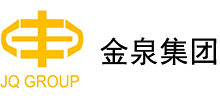Several factors affecting the process quality of Rolling mill production line for steel plants
Published Time:
2022-08-25 10:26
Source:
When the Rolling mill production line for steel plants was put into production for the first time, some common rolling process problems were encountered. Here are a few factors that affect the process quality of Rolling mill production line for steel plants, and I hope it will be helpful to you.

1. Use and maintenance of lubrication for rolling mill production line for steel plants
1 Conventional indicators and their influence on quality: (1) The concentration is about 2% (considering the influence of the rolling process) (2) pH value: 7-8, low pH value, large particles are easy to overlubricate; high pH value, Small particles are prone to lack of lubrication; (3) Iron content: ≤100ppm (mg/L) due to the effect of iron powder, oil droplets will combine together, resulting in a larger lubricating particle size, lower ESI, and higher oil consumption, which is the production of iron One of the conditions for yellow FeO (OH) (see the following formula). (4) Chloride ion: content ≤60ppm (mg/L). It has a great influence on lubrication. Control the residual amount of Cl ions on the surface of the strip after pickling, avoid the existence of FeCl2, to solve the problem of macula and rust. Lubrication stability is reduced, and lubrication quality is reduced.
2. Daily management of rolling mill production line for steel plants: (1) Routine indicators must be detected every day. If any indicators are abnormal, the cause should be found and resolved in time. (2) Conventional small flow discharge is a common method to solve this problem. 2 Roll (grinding requirements, assembly, use system, YAG laser texturing) (1) The roll surface has no obvious crystal grain defects, and the general roughness is ra0.5μm (2) The difference in the assembly diameter of the work roll is not more than 2mm.
3. Rolling mill production line for steel plants pass type distribution: (1) Consider the material (softness and hardness), thickness, width, finished product requirements, etc., observe the rolling force and host current during the production process; (2) Pass type and In principle, choose a smaller reduction rate for the final pass to obtain a better plate shape; (3) After a reasonable distribution, the rolling force of each pass is not much different (by adjusting the rolling force of the finished pass, the result can be obtained. Desired shape).
4. Rolling mill production line for steel plants tension selection: (1) When the thickness is greater than 1.0mm, the front tension is full load, and the rear tension is slightly less than the front tension (about 2 tons). When the thickness is less than 1.0mm, the specific tension of the 1380 rolling mill is generally 12kg/mm, and the specific tension of the 21050 rolling mill is generally 9~10kg/mm2. (2) At the beginning of each pass, if there is a soldered lead strip, the tension should be appropriately reduced in the first few turns to avoid the break of the conduction belt; (3) When slipping, the front tension can be increased, and the back tension can be reduced (the purpose is to increase (4) When the rolling force is too large, the front tension can be reduced and the back tension can be increased (the purpose is to reduce the bite); (5) The shape difference can be fine-tuned by the tension, if there is a double-sided wave , The tension can be appropriately increased. When there is a dielectric wave, the tension can be appropriately reduced (the second-rolled thin strip is easy to crack).
5. Rolling mill production line for steel plants rolling force: (1) Comprehensive consideration of rolling force, host current and other major factors to determine the pass reduction; (2) the relationship between rolling force and emulsion lubrication effect (lubrication Insufficiency will lead to increased rolling force, high energy consumption, roll aging, and high plate temperature; excessive lubrication will cause rolling slippage and high oil consumption; (3) raw material factors should also be considered when rolling force is abnormal.
Rolling,mill,production,line,for,steel,plants
Related News
Streamlining Steel Manufacturing: The Ultimate Rolling Mill Production Line
Key Facts About Rolling Mill Production Line for Steel Plants

